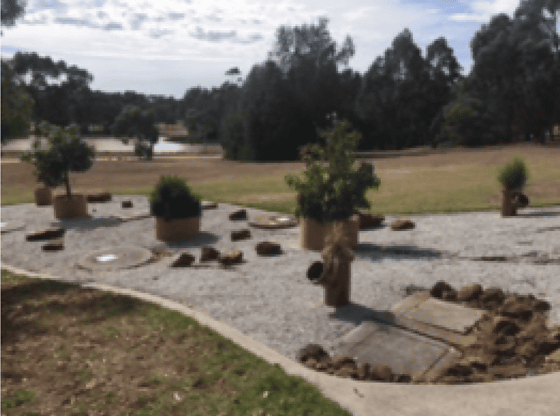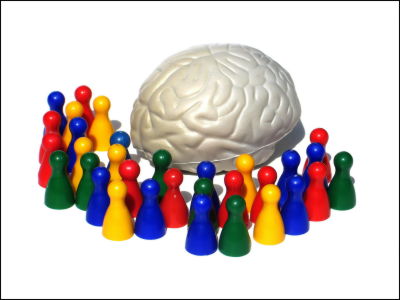What is 'ancient Aboriginal mnemonic' that is more effective than Sherlock Holmes mnemonic?

Australian Aboriginal techniques for memorization: Translation into a medical and allied health education setting
https://journals.plos.org/plosone/article?id=10.1371/journal.pone.0251710
New study finds ancient Australian Aboriginal memory tool superior to “memory palace” learning among medical students --Medicine, Nursing and Health Sciences
https://www.monash.edu/medicine/news/latest/2021-articles/new-study-finds-ancient-australian-aboriginal-memory-tool-superior-to-memory-palace-learning-among-medical- students
Even if you can't remember the titles of popular songs or the katakana words that suddenly came to be used, when you are told, 'Remember the way you went to school when you were in elementary school,' it comes to your mind. In this way, the human brain excels in the ability to memorize 'landscapes' rather than concepts and textual information, and the method of improving memory by using this characteristic to 'connect to a visual image' is the palace of memory. is. Recent studies have shown that using the Palace of Memory makes it possible to memorize about twice as many words as without any mnemonics.
Research results show that the mnemonic 'palace of memory' used by Sherlock Holmes actually helps improve memory --GIGAZINE

Regarding such mnemonics, David Lisser of Monash University and others focused on the method that has been newly handed down among Aborigines in Australia for 50,000 years. We conducted an experiment to compare the effects of this ancient Aboriginal mnemonic with the palace of memory.
Lisa et al. Classified 76 medical students who needed to memorize a wide range of knowledge about anatomy, illness, medicine, etc. into three groups: 'palace of memory,' 'ancient mnemonic of Aboriginal,' and 'no mnemonic.' The two groups, 'Mnemonic Palace' and 'Ancient Aboriginal Memories,' were trained in their respective mnemonics, and the 'No Memories' group was asked to watch a video for 30 minutes each.
The specific training contents of 'Palace of Memory' and 'Mnemonic of Ancient Aborigines' are as follows.
◆ Palace of Memory
Think of the bedroom of the house you lived in as a child, or the house you live in now, and imagine the objects in that space as concretely as possible (eg, on the desk to the left of the room entrance). A red lamp with a power switch in the center of the pedestal, with an adjustment function on the shade part). If there is content that you want to memorize, remember each content by associating the 'imaginary object itself' with the 'position of that object'. When trying to remember the content, imagine moving in an imaginary space and approaching a related object.
◆ Ancient Aboriginal mnemonics
Guide the subject to a garden called 'Rock Garden' (image below) on campus, and have them see objects such as stones, plants, and concrete boards in the rock garden. Then ask them to create their own 'story' for each object and its placement. If there is something you want to memorize, memorize it by associating each content with an object in the rock garden. When trying to remember the content, imagine moving through an imaginary rock garden and approaching related objects while remembering the story.

After training, subjects were asked to learn 20 species of butterflies, such as 'anglewing' and 'tortoiseshell', in 10 minutes. Then, the test was conducted 10 minutes and 30 minutes after the end of this memorization time. Memorization ability was measured.
Compared to the results of pre-measurement performed immediately before training, subjects using 'Ancient Aboriginal Memories' are 2.8 times more likely to name 20 species of butterflies, and subjects using 'Palace of Memory' are more likely. The number of subjects who had 'no mnemonic surgery' was 2.1 times, and 1.5 times. Since the result after the training was practically the second memorization, the results improved even without 'mnemonic', but the result is that 'ancient Aboriginal mnemonic' can be expected to significantly improve memorization ability.
In addition, it seems that a local Aboriginal elder participated in this experiment as a lecturer, and the subjects who took 'Ancient Aboriginal mnemonics' answered that they were 'creative and fun', and 95% said 'this method is useful'. , 56% said they would continue to use it.
Related Posts:
in Science, Posted by darkhorse_log






